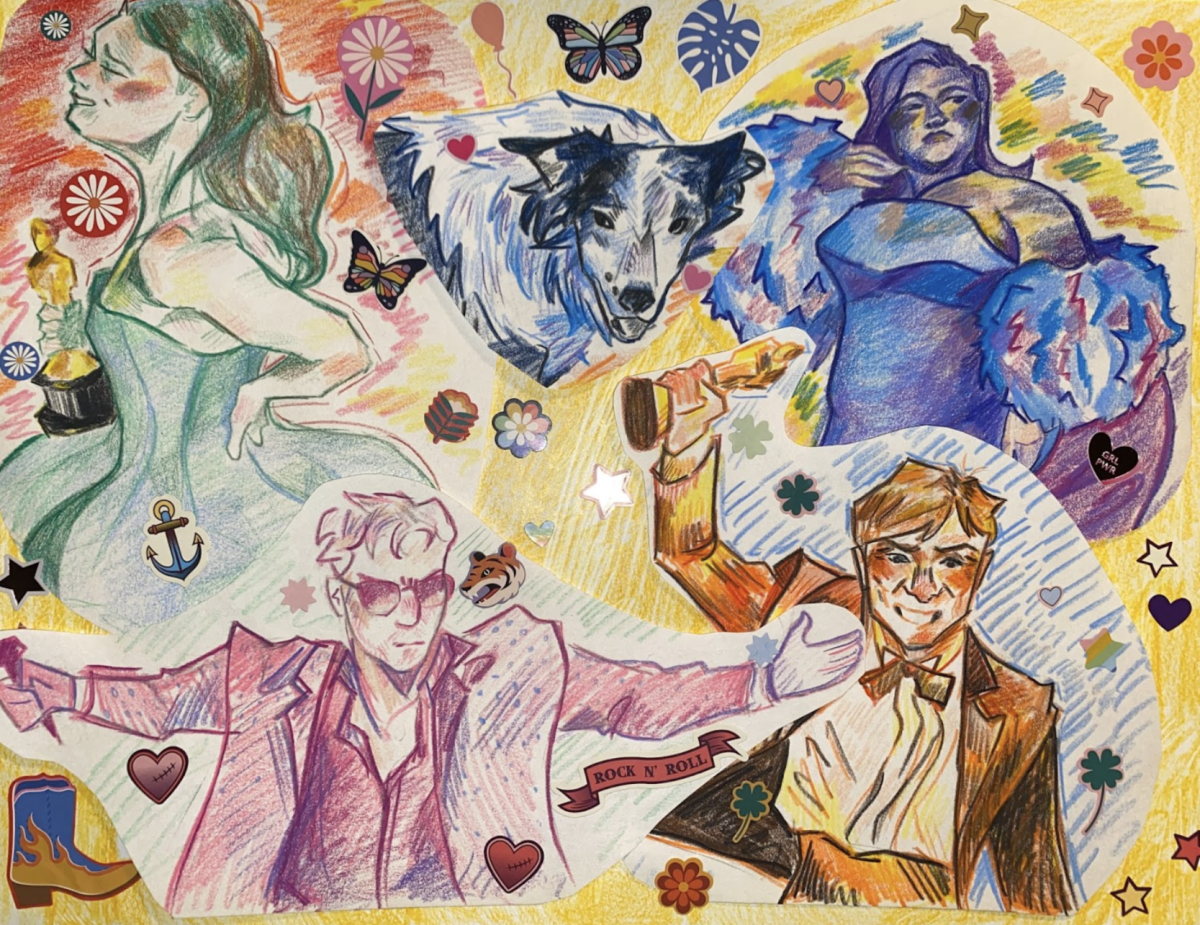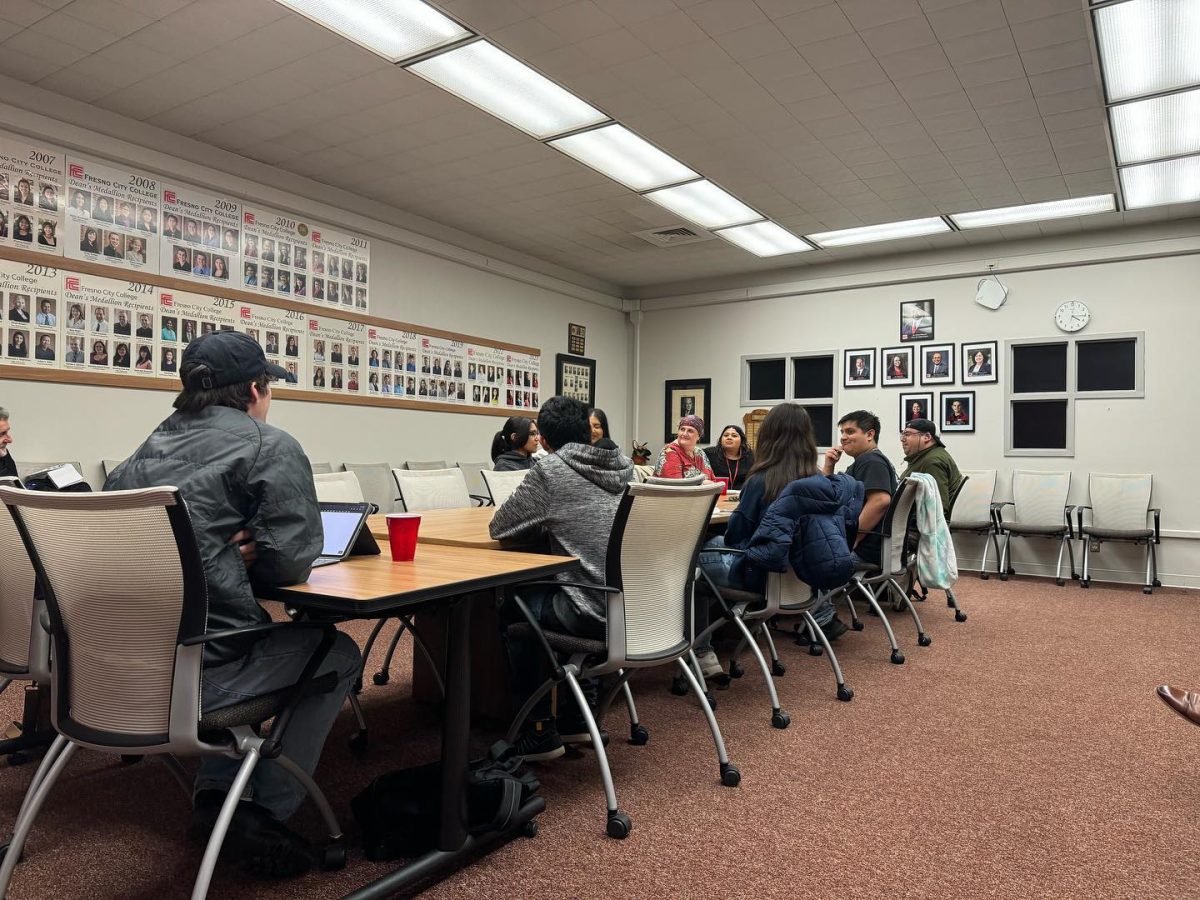“The Drunken City,” written by Canadian playwright, Adam Bock, was first produced in New York City in 2008. The play has now made its way to Studio 105 in the Theater Arts building at Fresno City College, where on Dec. 1-10, students and the community alike will have the chance to see the contemporary piece adapted by theater students at FCC.
The story, making its debut in California, tells of three twenty-something-year-old women who go out for a night in the town to celebrate the upcoming marriage of one of them. After having a few drinks, they find themselves in the company of three men, which in turn changes the course of events of the night, and perhaps of their lives as well. Doubts arise about what the future may hold as they see things in a different way. In a way, each character comes full circle by the end, as they all come to some sort of cosmic conclusion about themselves.
The story does seem to possess an element of familiarity. Many twenty-something individuals may find themselves in any one of these characters, believing they have life figured out when all of a sudden something happens that makes them rethink the way they see things; it’s a point of reaching maturity. It’s a coming-of-age story that is very universal with which most people can connect.
That is one of the main reasons the FCC community will get a chance to see this production. The process of putting together a production like this is a journey that starts at the beginning of the semester when pieces are chosen for specific reasons for FCC.
“We pick shows that people won’t readily see anywhere else,” said Chuck Erven, FCC theater instructor and director of “The Drunken City”. “We pick something different for the audience.”
There couldn’t be anyone better to lead this group of student actors, some of whom have no previous experience in theater productions. Erven has just as much enthusiasm as the actors, and he has the ability to work out the concepts with the actors instead of just telling them what to do.
The process involves reading through the script, getting to know the characters and setting the scene. The student actors put in a lot of work before the play ever actually hits the stage. As the performance is a requirement for students in theater classes, some students act while others are involved in technical aspects of bringing a production together, all contributing to the success of the play.
The seven student actors in the play include Jochebed (Jo) Smith as Linda; Benjamin McNamara as Eddie; Bridget Manders as Marnie; Giovanni Navarro as Bob; Jono Cota as Frank; and Lena Aguilan as Melissa. The seventh student actor, Andrea Reyes, is an understudy for the character of Melissa.
“It’s an ensemble show; in so many ways we put it together. We figure out how to tell the story,” said Erven as the cast began their first staff meeting for the production. These staff meetings are essential in the process. Besides the cast beginning to do read-throughs and discussions, part of the process is that each actor gives their interpretation of their respective characters, in a sense getting to know them and the events they go through.
“What struck me the most is how the dialogue is written. It’s so real; the way they talk because they are drunk really shows in the script,” said McNamara, who plays Eddie.
Andrea Reyes – Lena Aguilan’s understudy for the character of Melissa – is required, just as the rest of the cast, to attend these meetings, if not more. Her role as understudy includes knowing all of Melissa’s lines, attending every rehearsal Aguilan attends, and really watching Aguilan’s take on the character as well as absorb the direction given to her by Erven.
Other homework that has helped Reyes includes a book on breaking down scripts into beats; listening to dialect tapes on the New Jersey accent used in the play as well as watching movies that are contemporary pieces post-9/11, which is the setting for the story. All of this extra work culminates on performance nights, if Aguilan cannot perform for any reason, it is Reyes’ responsibility to carry on the character.
“It’s interesting how each of us has a different take on the character, even in scenes with no lines,” said Reyes. While all of the student actors do so much to prepare besides rehearse, Reyes has additional homework to do as this is her first show.
“She’s never done theater before, but was cast because she was really good,” Erven said of Reyes. “Some students you find are like diamonds in the rough. You work with them a lot.”
Erven praises all of his cast members, “I love working with these students. They’re wonderful actors, and we’re fortunate to have them here.” His sounds sincere, as he guides the group through rehearsals. Erven and the actors explore scenes together in order to find the best way to portray the characters and the story.
As the group rehearses a scene, Erven stops them to ask, “What did you think?” Aguilan responds with, “I really like it now; I was so lost with that scene.”
“It’s really a collaborative effort, going back and forth,” said Ian Vawter, production stage manager. Vawter, who is the middle man between all the departments, attends every rehearsal and oversees everything, including lines rehearsals during practice; lighting and set staging, designed by theater instructor, Christopher Boltz; costumes, designed by Debra Shapazian; and the music.
“The hardest part of pulling this show off,” Vawter said, “is the stage that moves.” The stage is essential to the story, and it’s the first time FCC has a moving man-made stage that tilts by holding 300 pounds on one side.
“It took three techs – mathematicians and physicists brought in from different states – to help design the moving stage,” said Vawter. The techs were friends of Christopher Boltz, who according to Vawter is extremely qualified as he has worked in Hollywood on many shows, such as “That 70’s Show.” Boltz also had seven of his TA-24 students help build and paint the set.
Just like set design is important, so are costumes and lighting. Vawter describes how some fabric colors turn different colors under certain lighting, highlighting the importance of each department working with each other. Theater students started working on costumes right after “The Illusion” opened.
“In theater, there’s only so much amount of time. You’re creating a world that the audience is going to believe. It’s not always easy, but it can be done,” said Vawter.
Although Vawter oversees the many aspects of the production, it’s truly a team effort where everyone gets a little something out of it in the end.
As the new kid, Lena Aguilan who plays Melissa has found great support from everyone. “Sure you’re playing a part, but it’s more than that,” she said. “You want to make sure everyone looks good.”







